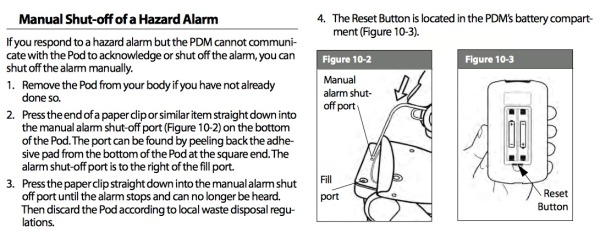 Original art by Mike Lawson - Check out Mike's YouTube page by clicking on the image
Original art by Mike Lawson - Check out Mike's YouTube page by clicking on the image
This story begins in 2006 just moments after I asked Arden's nurse practitioner if she was "nuts".
NP: <blank stare>
Me: <incredulous gaze>
Only moments before our staring contest began Arden's NP became the first person to suggest that I give Arden her mealtime insulin before she started to eat. I can't be sure if she referred to the practice as pre-bolusing, probably not as we were MDI, but she definitely wanted me to inject before Arden ate.
"Are you nuts?"
I responded emphatically that I could never give Arden insulin before she ate. Arden was two years old and there was no way to be certain of how much food that she would finish. The NP repeated her very reasonable request but I could not wrap my head around this new idea. Pre-Bolusing, bah, Arden would be safer if I left her alone at the mall with money pinned to her shirt.
I was 100% correct on that day. There was absolutely no way to be sure of Arden's appetite. However the inability to guess how much she would eat wasn't the only reason I didn't want to inject before meals. Arden weighed maybe nineteen pounds at the time and Novolog had a way of peaking intensely in her body. She had already experienced a seizure from an insulin miscalculation that I made. That mistakes lesson was still very fresh in my mind and with that bad memory still looming over me, I just couldn't bring myself to administer insulin that wasn't already covered by food or a high BG.
Of course everything that the NP said made total sense. I wanted to give Arden's insulin a head start, I dreamt of a moment when her food would begin to expel it's carbohydrates just as the insulin was pulling her BG lower. I could picture that perfect image in my mind, a tug-of-war with food on one side and insulin on the other. Both combatants pulling furiously without once moving the rope that is Arden's blood glucose value - the dream of a steady mealtime BG. I wanted very much for that to be our reality and so I promised myself that I would make the adjustment when the time was right.
Fear and poor timing stopped me from taking the NP's advice all those years ago. Eventually the day came when I found my footing with the idea and gave up on being scared... that's the day Arden's A1c began to decrease.
We haven't looked back.
The beginning of our trip down the road to pre-bolus freedom was littered with pot holes. The first bump took some time to traverse, we first had to wait until Arden was old enough to give thoughtful consideration to her hunger. After that hurdle was cleared we took the first step, bolusing ten minutes before a meal. Those next ten minutes were the most tense of my day, I would test and worry so much after the bolus that I barely had time to finish cooking. Initial results were less than stunning so I moved the pre-bolus to fifteen minutes before a meal. The extra five minutes increased the impact of the insulin and lessened Arden's post meal spikes, but I still wasn't seeing a huge return on our efforts. I wanted to take the process to another level but I couldn't, in good conscience, give Arden insulin farther from the beginning of her meal. If only I could see the insulin work, I needed a crystal ball...
... or a DexCom CGM
Arden's CGM turned pre-bolusing into the most valuable weapon in our arsenal. It's one thing to have a good idea of how long it takes insulin to begin working in the body. But when you are able to not only witness the movement of the BG, but also the speed with which your glucose level is rising or falling... it's the difference between rumor and fact... between guessing and knowing with reasonable certainty. The day that my eyes were opened to the benefits of wearing a CGM, that was the day that everything changed.
Arden was 149 before dinner last week. I bolused for the elevated BG and pre-bolused for 50 carbs, it was a significant amount of insulin for her. Before DexCom I would have panicked and served the food in less then ten minutes. Now I take my time finishing dinner while Arden and Cole do their homework and leisurely prepare their plates as I wait for the CGM to tell me when to serve.
I put dinner on the table when the arrow on Arden's DexCom G4 turned south, waiting until her BG was below 110. The amount of time between Arden's bolus and her BG decline can vary most days depending on a number of factors. Glucose monitoring grants the flexibility to wait, providing a level playing field for the insulin and those scrappy carbs to wage their battle on.
At least now it's a fair fight.
Don't forget what the bottom of the site says... Always consult your doctor before making changes to your health care. I am not a doctor.
More about the art: The art work displayed at the top of this post is an original piece from Mr. Mike Lawson. Mike is a tireless advocate for people with diabetes, a friend and extremely talented artist. You can find him working at TUdiabetes, on Twitter and through his fantastic YouTube channel.
 Thursday, October 31, 2013 at 8:22AM
Thursday, October 31, 2013 at 8:22AM 
 Scott Benner
Scott Benner

 BGnow,
BGnow,  DexCom,
DexCom,  Insulin,
Insulin,  TipsNTricks in
TipsNTricks in  Daddy's Blog
Daddy's Blog 








